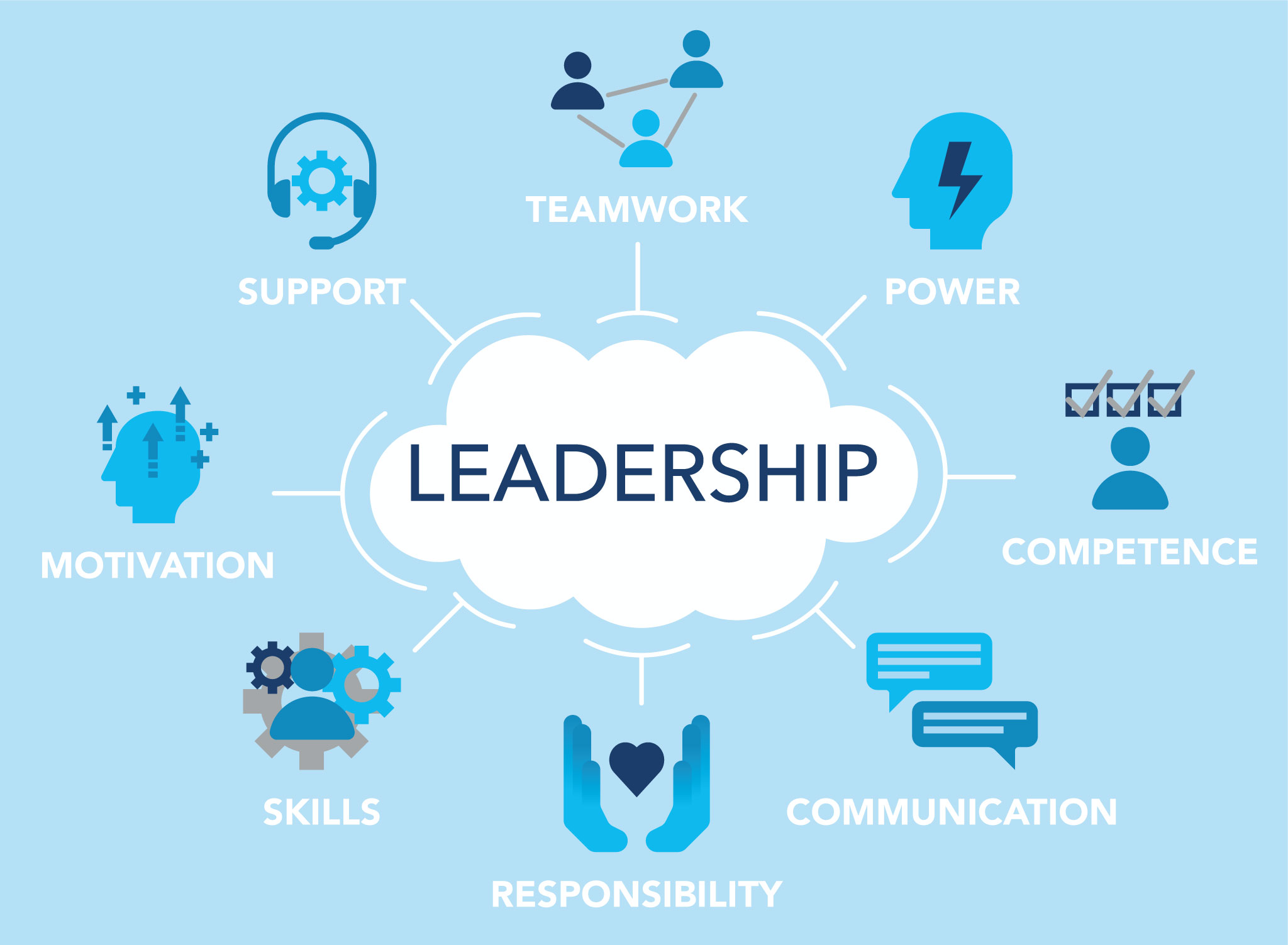
Building a resilient leadership team is a must these days. Organizations with solid leadership are more than twice as likely to outperform their competitors. We'll look at the best strategies to help leaders and their teams handle challenges smoothly and confidently. Whether you're a seasoned executive or just starting, these strategies can make a big difference. Let's dive in and see how you can strengthen your leadership team to handle change and uncertainty better.
Summary: This article discusses key strategies for building a resilient leadership team and provides answers to frequently asked questions on the topic. It focuses on the importance of resilience in leadership and practical steps to enhance team strength and adaptability.
Building a Resilient Leadership Team: Key Strategies
Growth Mindset in Leadership Strategies
In leadership, having a growth mindset is key to handling today's business challenges. This concept, supported by psychologist Carol Dweck, involves believing that skills and intelligence can grow with effort and dedication. Leaders with this mindset tackle challenges head-on, persist through difficulties, and view failure as an opportunity to learn and grow.
A growth mindset encourages ongoing learning and transforms setbacks into learning moments, helping teams confront challenges without fearing failure. Leaders who foster this mindset value effort and smart risks, creating a culture of experimentation and continuous improvement. For instance, leadership teams might hold regular reflection sessions to learn from failures, reinforcing a culture that values growth and innovation.

Leadership Strategies for Psychological Safety and Trust
Psychological safety is the bedrock of a strong leadership team. It involves creating an environment where individuals feel safe to take risks, share their thoughts, and make mistakes without fear. When this safety is in place, teams innovate more, stay engaged, and adapt to change better.
Psychological safety allows teams to push limits and act without fear of blame, boosting resilience. Leaders build trust through clear, consistent communication, especially during tough times, by sharing challenges and solutions openly. Leaders with emotional intelligence help create trust by managing emotions well and fostering a collaborative environment. In a crisis, a leader might openly discuss problems and invite team input on solutions, building trust and safety.

Building Leadership Support Networks
Resilient leaders understand the value of support networks both inside and outside the organization. These networks provide emotional support, diverse perspectives, and resources crucial for overcoming challenges.
- Cross-functional collaboration exposes leaders to various viewpoints and business areas, enhancing adaptability and problem-solving.
- Inclusive environments that welcome diverse perspectives improve problem-solving and strengthen team resilience.
- Support networks within leadership teams provide emotional and professional support, helping leaders manage stress and maintain composure.
Leadership teams might set up regular cross-departmental meetings to share insights, resources, and support, promoting a strong internal network.
Leadership Well-being and Self-Care Strategies
The well-being of leaders and their teams is vital for resilience. Leaders who prioritize self-care and encourage a healthy work-life balance set a good example and create a more sustainable work environment.
Resilient leaders practice emotional intelligence, including self-awareness and stress management, supporting their well-being. Maintaining well-being helps leaders stay calm and make thoughtful decisions under pressure. Leaders might include regular mindfulness or stress management practices in their routines to maintain mental and emotional health.
Practical Leadership Tools for Resilience
Using practical tools and frameworks can boost the resilience of leadership teams. These tools offer structured ways to solve problems and make decisions, helping teams tackle challenges more effectively.
- Measuring resilience through employee surveys, pulse checks, and team performance metrics helps organizations understand and improve resilience levels.
- Training on adaptability, emotional regulation, and problem-solving builds key resilience skills at all levels.
- Implementing contingency plans and scenario-based strategies prepares leadership teams for various challenges, enhancing resilience.
An organization might use resilience metrics and offer workshops on emotional regulation and adaptive leadership to strengthen their leadership team's ability to handle change.
Continuous Learning and Adaptability in Leadership
Continuous learning and adaptability are crucial for resilient leadership. In a fast-changing world, leaders must commit to lifelong learning and be open to new ideas and approaches.
- Adaptability is a core part of resilience, allowing leaders to change strategies and guide teams through uncertainty.
- Encouraging a mindset of experimentation and continuous learning helps leaders embrace change as a growth opportunity.
- Ongoing professional development and exposure to diverse skills and perspectives enhance leadership adaptability and resilience.
Leadership teams might engage in ongoing training and scenario planning exercises to build agility and readiness for change.
Leadership Strategies for Experimentation and Learning
Leaders should create an environment where team members feel safe to experiment and innovate. This involves redefining failure as a learning opportunity, not a dead-end. One effective way is to hold regular "retrospective meetings," where teams reflect on successes, failures, and improvements. This practice promotes continuous improvement and reinforces that mistakes are part of learning.
Constructive Feedback in Leadership
Constructive feedback is essential for developing a growth mindset. Leaders should focus on feedback that is specific, actionable, and centered on effort and strategies, not innate abilities. This helps team members understand that their performance is within their control and can improve with effort and the right approach.
Open Communication Channels for Leadership
To foster psychological safety, leaders should create open communication channels. This means setting up platforms where team members can freely express their ideas and concerns. Tools like Slack or Microsoft Teams can help by providing space for ongoing dialogue. Regular one-on-one meetings between leaders and team members can also build trust and ensure everyone feels heard and valued.
Leadership Empathy and Understanding
Empathy is a powerful trust-builder. Leaders should aim to understand their team members' perspectives and experiences. This can be done through active listening, focusing on understanding rather than responding. Training sessions on emotional intelligence can also help leaders better recognize and manage their own and their team members' emotions.
Building Internal Support Systems
Within the organization, leaders can build support networks by promoting collaboration and team-building activities. Cross-functional teams, for example, bring together individuals from different departments to work on common goals, fostering unity and shared purpose. Mentorship programs are another effective strategy, pairing less experienced employees with seasoned leaders who can offer guidance and support.
Expanding External Leadership Networks
External support networks are just as important. Leaders should engage with industry groups, attend conferences, and join professional associations to expand their networks. These connections offer valuable insights, collaboration opportunities, and resources that might not be available internally. Platforms like LinkedIn are great for maintaining and expanding professional networks, allowing leaders to connect with peers and industry experts worldwide.
Work-Life Balance Policies for Leaders
Work-life balance policies can include flexible work hours, remote work options, and generous leave policies. By implementing these, leaders show they value their team members' time and personal lives, leading to increased job satisfaction and reduced burnout. Companies like Google and Microsoft have been leaders in offering flexible work arrangements, recognizing the positive impact on employee well-being and productivity.
Leadership and Mental Health Awareness
Raising mental health awareness is another critical aspect of prioritizing well-being. Leaders should provide resources and support for mental health, like access to counseling services or mental health days. Training sessions on stress management and mindfulness can also be beneficial, giving team members tools to manage their mental health effectively.
Leadership Resilience Assessment Tools
Resilience assessment tools help leaders understand their current resilience levels and identify improvement areas. Tools like the Resilience at Work (R@W) Scale offer insights into individual and team resilience, providing a basis for targeted development efforts. By regularly assessing resilience, leaders can proactively address potential weaknesses and build on strengths.
Agile Frameworks for Leadership
Agile frameworks, like Scrum or Kanban, are excellent for enhancing resilience. These frameworks promote flexibility, collaboration, and continuous improvement, allowing teams to adapt quickly to changing circumstances. By adopting agile practices, leaders can create an environment where teams are empowered to respond effectively to challenges and seize new opportunities.
Lifelong Learning in Leadership
Leaders should promote a culture of learning by offering professional development opportunities. This can include workshops, online courses, and conferences that help team members expand their skills and knowledge. Organizations like Coursera and LinkedIn Learning offer a wide range of courses tailored to individual and team needs, making continuous learning accessible and convenient.
Leadership Strategies for Embracing Change
Adaptability requires a willingness to embrace change and innovation. Leaders should encourage their teams to be open to new ideas and approaches, even if they challenge the status quo. This can be done by celebrating innovative thinking and rewarding calculated risks. By creating an environment where change is seen as an opportunity, leaders ensure their teams remain resilient and competitive in a dynamic market.
FAQs on Building a Resilient Leadership Team
Leadership Strategies for Fostering a Solutions-Oriented Mindset
Encouraging your team to adopt a solutions-oriented mindset is crucial for innovation and resilience. Start by promoting a growth mindset. Communicate to your team that mistakes aren't failures but opportunities to learn and improve. This approach fosters adaptability and continuous improvement.
Support smart risk-taking to help the team view challenges as opportunities for innovation rather than obstacles to fear. Empower team members to take ownership of their personal growth, which builds confidence and accountability. Aligning team roles with individual strengths maximizes potential and prevents burnout. Tools like the CliftonStrengths assessments can help identify individual strengths, enabling you to assign roles that allow team members to excel and solve problems creatively.

Effective Leadership Strategies for Building a Strong Support Network
A robust support network is essential for leaders, particularly in turbulent times. Trust is foundational, built through clear, consistent, and honest communication—especially crucial during uncertainty. Foster an inclusive atmosphere that embraces diverse perspectives to enhance problem-solving and resilience.
Cross-departmental collaboration broadens understanding and adaptability. Commit to continual learning about handling uncertainty, data-driven decision-making, and leading with empathy to enhance resilience. Developing emotional intelligence—self-awareness and awareness of others—enables leaders to build trust and create a safe environment.
Practical strategies include regular cross-departmental meetings, leadership training, and maintaining open communication channels. Engaging with mentors, executive coaches, and encouraging peer collaboration further fortifies your support network. Loeb Leadership provides more insights on building resilient leaders.
Cultivating Psychological Safety: Key Leadership Strategies
Creating a psychologically safe environment is essential for optimal team performance. Leaders play a pivotal role in ensuring team members feel empowered to take risks, voice opinions, and share ideas without fear of repercussions. Cultivate a culture of learning where setbacks are viewed as growth opportunities.
Emotional intelligence, including empathy and active listening, is vital for building trust and safety. Maintain clear and consistent communication, especially during uncertain times, to reassure your team. Encourage open dialogue, welcome feedback, and respond with empathy to foster a safe space for innovation and honest discussions. Transparent leadership, where leaders share their own challenges, encourages team members to take risks and be open. The Mental Game explores these strategies in depth.
Additionally, empower team members by delegating low-risk decision-making responsibilities. This approach builds resilience and leadership skills across the team. Implement recovery periods, such as 'no-meeting Fridays,' to sustain long-term performance. Promote open communication and assume positive intent to foster trust and collaboration, focusing on solutions rather than blame. Balance challenges with support to keep teams motivated and engaged. Regular cross-training enhances adaptability and prepares team members for various roles. Demonstrate resilient leadership by remaining calm and focused during difficult times, inspiring your team to persevere. For more on these methods, the Niagara Institute offers detailed insights into building resilient teams.